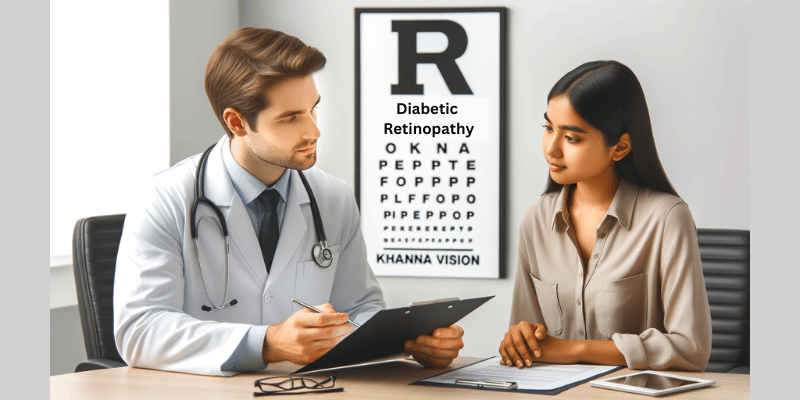Diabetic retinopathy is a diabetes complication that affects the eyes, specifically the blood vessels of the light-sensitive tissue called the retina. As one of the primary causes of blindness in the working-age population, understanding diabetic retinopathy is essential for those with diabetes and for those at risk.

Understanding the Condition: The retina is responsible for capturing light and converting it into signals that are sent to the brain through the optic nerve, allowing us to see. Over time, high blood sugar levels from diabetes can damage the blood vessels in the retina, leading to diabetic retinopathy.
Types of Diabetic Retinopathy: There are two primary stages:
- Non-proliferative diabetic retinopathy (NPDR): This is the earlier stage where blood vessels in the retina start to weaken, causing tiny bulges called microaneurysms. These can rupture and lead to blood and fluid leakage into the retina.
- Proliferative diabetic retinopathy (PDR): This is the more advanced form. New, fragile blood vessels start to grow in the retina and into the vitreous, the gel-like substance in the center of the eye. These vessels can bleed easily, leading to vision problems.
Symptoms and Diagnosis: In its early stages, diabetic retinopathy may show no symptoms. As it progresses, symptoms can include floating spots, blurred vision, fluctuating vision, dark areas in the vision, or even complete vision loss. Regular eye examinations at Khanna Vision under the esteemed Dr. Rajesh Khanna MD can detect early signs of the disease, ensuring timely intervention.
Treatment and Management: Treatments depend on the type and severity of diabetic retinopathy. Options include laser treatment to stop or reduce blood and fluid leakage, a procedure called vitrectomy to remove blood from the middle of the eye, and injections of medications into the eye to prevent blood vessel growth.
Prevention and Lifestyle Changes: Managing diabetes is the key to preventing or delaying the onset of diabetic retinopathy. This includes regular monitoring of blood sugar levels, maintaining a balanced diet, regular exercise, avoiding smoking, and controlling blood pressure and cholesterol. Regular eye check-ups are also crucial.
Conclusion: Diabetic retinopathy is a severe condition, but with early detection, appropriate management, and the comprehensive care provided by institutions like Khanna Vision and experts like Dr. Rajesh Khanna MD, its progression can be managed, and vision can be preserved.